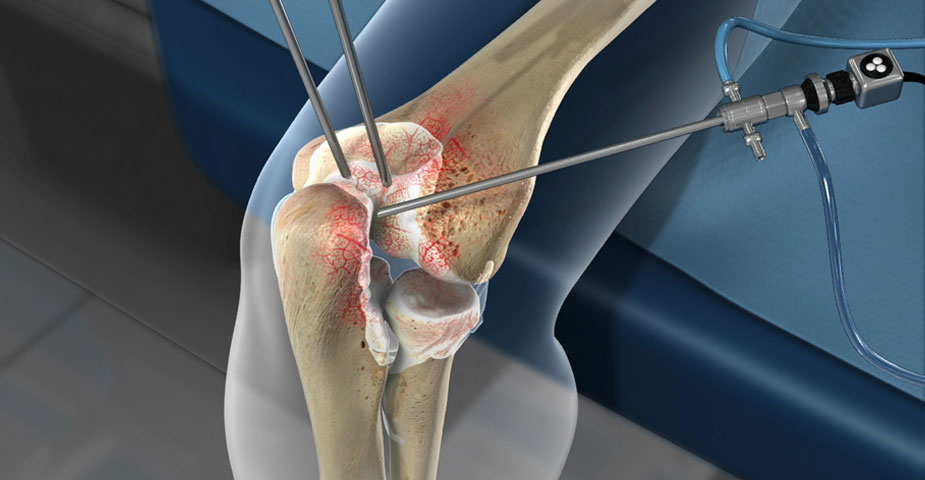Elbow Arthroscopy

Elbow arthroscopy is a minimally invasive surgical procedure that involves the use of a small camera, known as an arthroscope, to examine and treat various conditions within the elbow joint. This procedure is performed through small incisions, allowing the surgeon to visualize the interior of the joint and address issues such as damaged cartilage, inflamed synovium, loose bodies, and ligament tears. Elbow arthroscopy is valuable for both diagnostic purposes, helping identify the source of pain or limited range of motion, and therapeutic interventions, enabling surgeons to perform repairs or removal of problematic tissues. With smaller incisions and reduced tissue disruption, elbow arthroscopy typically results in less postoperative pain and a quicker recovery compared to traditional open surgery.
Why its done
Elbow arthroscopy is a specialized surgical procedure designed to diagnose and treat various conditions affecting the elbow joint. This minimally invasive approach involves the use of an arthroscope—a small, flexible tube with a camera at the end. Elbow arthroscopy may be recommended for several reasons:
Diagnostic Clarity: When traditional diagnostic methods, such as imaging studies, do not provide a conclusive diagnosis for persistent elbow pain or dysfunction, arthroscopy allows for direct visualization of the joint's interior.
Treatment of Specific Conditions: Elbow arthroscopy can address various elbow issues, including:
- Osteoarthritis: Removal of loose bodies or bone spurs.
- Tennis or Golfer's Elbow: Debridement or repair of damaged tendons.
- Cartilage Injuries: Treatment or removal of damaged cartilage.
- Ligament Tears: Repair or reconstruction of torn ligaments.
- Synovitis: Removal of inflamed synovial tissue.
Minimally Invasive Approach: Elbow arthroscopy offers the advantages of smaller incisions, reduced postoperative pain, and quicker recovery compared to traditional open surgery.
Recovery Enhancement: The minimally invasive nature of the procedure often allows for faster recovery and an earlier return to normal activities.
Preservation of Healthy Tissues: Arthroscopy minimizes disruption to healthy tissues surrounding the elbow joint, contributing to better overall joint function.
Whether to address a specific injury, relieve chronic pain, or enhance joint function, elbow arthroscopy is tailored to each patient's unique needs, providing a targeted and effective solution for elbow joint-related concerns.
Risk
Elbow arthroscopy, while generally considered safe, carries certain risks and potential complications, as with any surgical procedure. It's crucial for individuals considering this intervention to be aware of these risks and discuss them thoroughly with their healthcare provider. Here are some common risks associated with elbow arthroscopy:
-
Infection: There is a risk of infection, although it is relatively low. Strict adherence to sterile surgical techniques helps minimize this risk.
-
Bleeding: As with any surgery, there is a possibility of bleeding during or after the procedure. This risk is typically managed by the surgical team.
-
Nerve or Blood Vessel Damage: The use of arthroscopic instruments poses a small risk of unintended damage to nearby nerves or blood vessels, potentially causing numbness, tingling, or circulation issues.
-
Stiffness or Weakness: Some patients may experience stiffness or weakness in the elbow post-surgery, particularly if extensive repair or reconstruction is performed.
-
Persistent Pain: In certain cases, patients may continue to experience pain after the surgery, necessitating further evaluation and management.
-
Scar Tissue Formation (Arthrofibrosis): Excessive scar tissue formation in the elbow joint can potentially limit range of motion and function.
-
Incomplete Healing: Tissues may not heal as expected in some cases, requiring additional interventions or procedures.
-
Anesthetic Risks: General or regional anesthesia involves its own set of risks, including allergic reactions, respiratory issues, or adverse reactions to anesthesia drugs.
-
Failure to Resolve Symptoms: While elbow arthroscopy can address specific issues, there is no guarantee that all symptoms will be completely resolved.
-
Complications from Specific Procedures: The nature and complexity of specific arthroscopic procedures (e.g., ligament repair or debridement) may introduce additional risks or complications, which should be discussed with the healthcare team.
It's essential for patients to communicate openly with their healthcare provider, provide a comprehensive medical history, and follow postoperative care instructions diligently to minimize the risks associated with elbow arthroscopy.
Procedure
Elbow arthroscopy is a minimally invasive surgical procedure used to diagnose and treat various conditions affecting the elbow joint. The procedure involves the following key steps:
Anesthesia: The patient is administered either general or regional anesthesia to ensure comfort during the surgery.
Incision Placement: Small incisions are made around the elbow joint to serve as entry points for the arthroscope and specialized instruments.
Arthroscopic Inspection: An arthroscope, a small tube with a camera, is inserted through one of the incisions to visualize the interior of the elbow joint on a monitor.
Diagnostic Evaluation: The surgeon examines the cartilage, ligaments, tendons, and other structures within the elbow joint to diagnose specific issues.
Treatment or Repair: Based on the diagnosis, the surgeon may perform arthroscopic procedures such as removing loose bodies, repairing ligaments or tendons, or addressing cartilage damage.
Closure: Once the necessary procedures are completed, the arthroscope and instruments are removed, and the small incisions are closed with stitches or adhesive strips.
Recovery and Rehabilitation: The patient undergoes monitoring in the recovery room, and a rehabilitation plan is often initiated to aid in the recovery process and restore elbow function.
Postoperative Care: Patients receive instructions for wound care, pain management, and guidelines for elbow movement. Follow-up appointments are scheduled to monitor progress and assess the effectiveness of rehabilitation.
Elbow arthroscopy is valued for its ability to provide a thorough examination and targeted treatment with smaller incisions, leading to reduced postoperative pain and faster recovery compared to traditional open surgery. The specific procedures performed during elbow arthroscopy depend on the individual's diagnosis and the surgeon's treatment plan.
